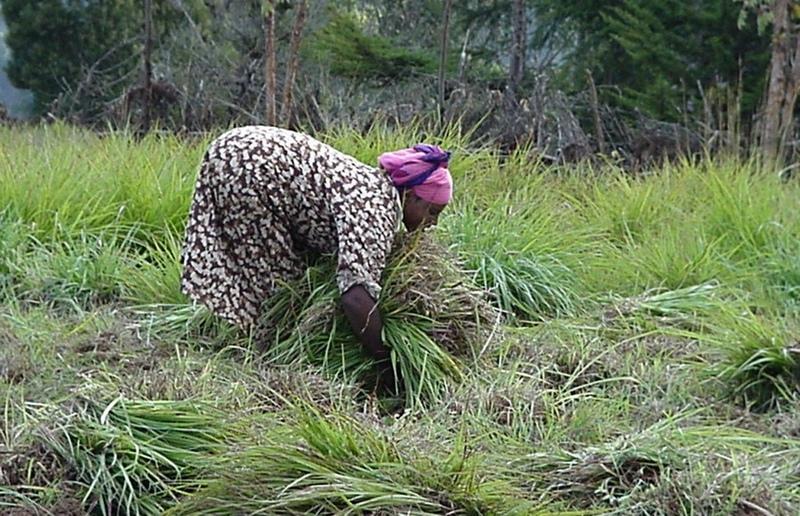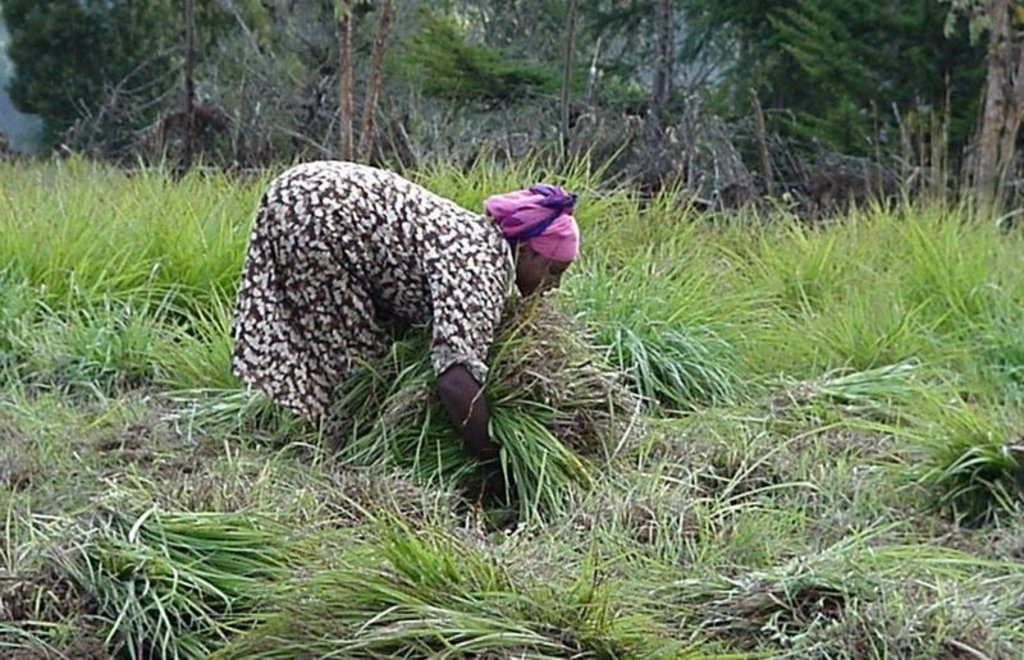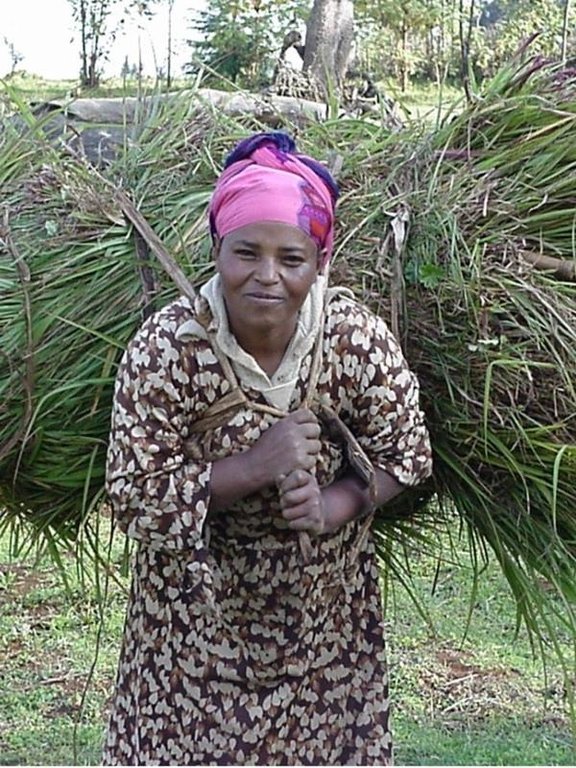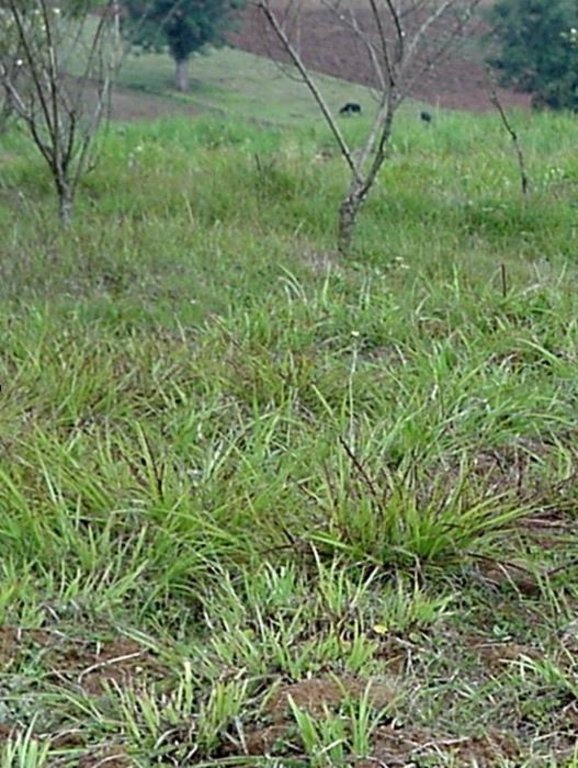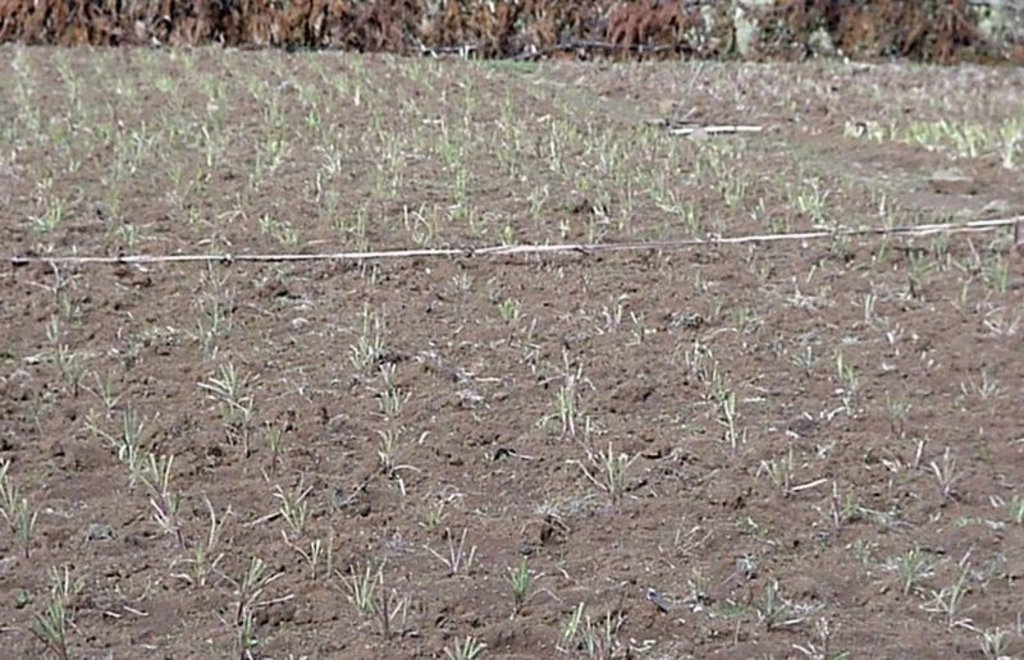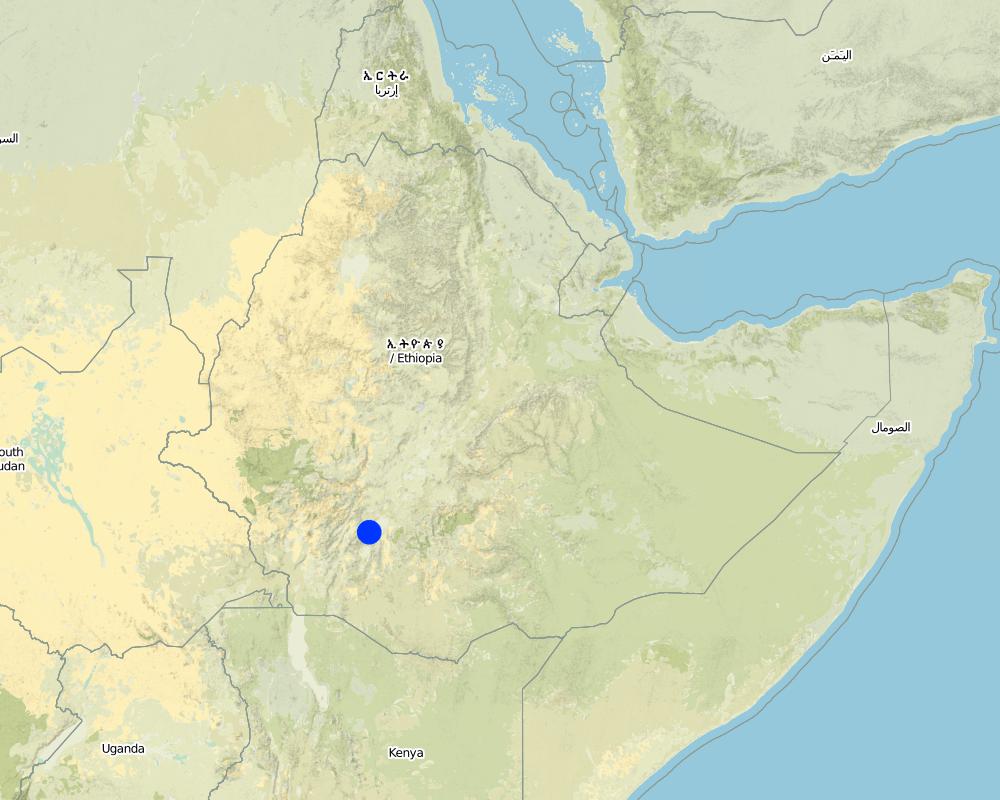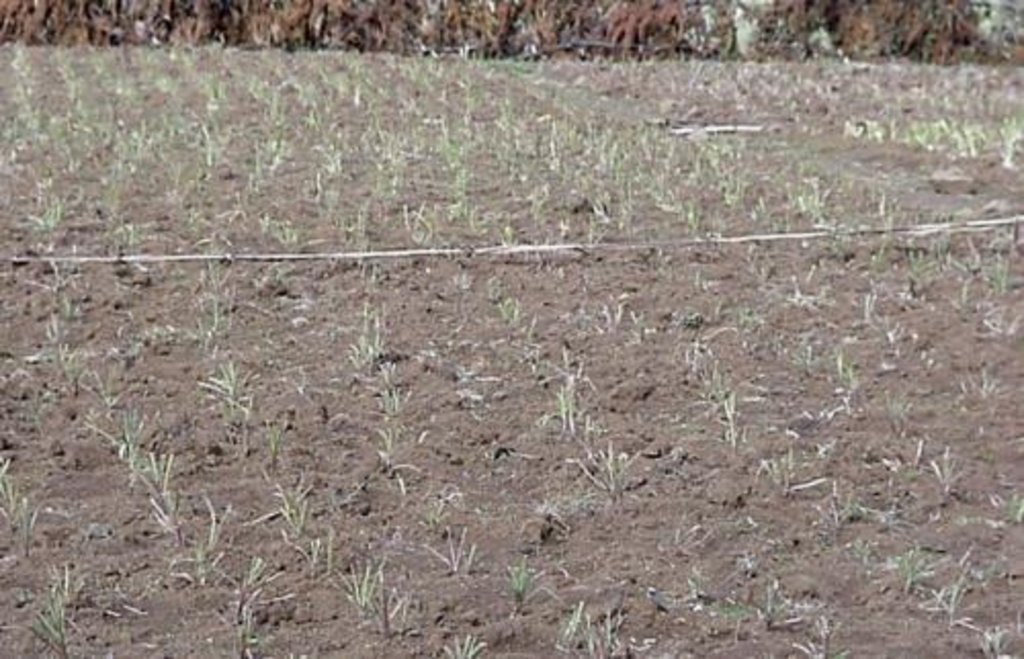Improved grazing land management [Ethiopia]
- Creation:
- Update:
- Compiler: Daniel Danano
- Editor: –
- Reviewers: Fabian Ottiger, Alexandra Gavilano, Donia Mühlematter
Gitosh masheshal
technologies_1049 - Ethiopia
View sections
Expand all Collapse all1. General information
1.2 Contact details of resource persons and institutions involved in the assessment and documentation of the Technology
Name of project which facilitated the documentation/ evaluation of the Technology (if relevant)
Book project: where the land is greener - Case Studies and Analysis of Soil and Water Conservation Initiatives Worldwide (where the land is greener)Name of the institution(s) which facilitated the documentation/ evaluation of the Technology (if relevant)
Food and Agriculture Organization of the United Nations (FAO) - ItalyName of the institution(s) which facilitated the documentation/ evaluation of the Technology (if relevant)
Ministry of Agriculture and Rural Development of Ethiopia (Ministry of Agriculture and Rural Development) - Ethiopia1.3 Conditions regarding the use of data documented through WOCAT
When were the data compiled (in the field)?
01/07/2003
The compiler and key resource person(s) accept the conditions regarding the use of data documented through WOCAT:
Yes
1.5 Reference to Questionnaire(s) on SLM Approaches
2. Description of the SLM Technology
2.1 Short description of the Technology
Definition of the Technology:
Rehabilitation of communal grazing lands, through planting of improved grass and fodder trees and land subdivision, to improve fodder and consequently livestock production.
2.2 Detailed description of the Technology
Description:
This case study focuses on the highly populated, humid highland regions of Ethiopia that experience serious shortages of pasture. Due to rapid population growth, communal grazing areas are increasingly being converted into cropland. This has led to enormous pressure on the little remaining grazing land, through overstocking of dairy cows and oxen, and thus overgrazing, resulting in considerably decreased productivity.
Improved grazing land management is vital to increase food security and alleviate poverty, as well as to bring environmental rewards. To address these problems, the national SWC programme in Ethiopia initiated a grazing land management project over a decade ago. Implementation of the technology includes the initial delineating of the grazing land, and then fencing to exclude open access. This is followed by land preparation, application of compost (and, if necessary, inorganic fertilizers) to improve soil fertility, then planting of improved local and exotic fodder species, including multipurpose shrubs/trees such as Leucaena sp. and Sesbania sp. and the local desho grass (Pennisetum sp.). Desho has a high nutritive value and regular cuts are ensured. It is planted by splits, which have high survival rates and establish better than grasses which are seeded. Other grass seeds, as well as legumes, including alfalfa (lucerne: Medicago sativa) and clovers in some cases, are mixed with fodder tree seeds and then broadcast.
Maintenance activities such as weeding, manuring and replanting ensure proper establishment and persistence. Fodder is cut and carried to stall-fed livestock. Once a year, grass is cut for hay, which is stored to feed animals during the dry season. Experience shows that such grazing land is best managed when individually owned and used. In the study area, the community has distributed small plots (<0.5 ha) of communal grazing land to individual users to develop, manage and use.
The overall purpose of the intervention is to improve the productivity of grazing land and control land degradation through the introduction of productive techniques and improved fodder species, which consequently improve livestock production. Commercialisation of animals and marketing of their products increases the income of farmers. The government provides technical assistance, close follow-up, and some inputs for initial establishment. Land users are trained in compost/ manure application, planting of seeds, splits and seedlings, and general maintenance.
2.3 Photos of the Technology
2.5 Country/ region/ locations where the Technology has been applied and which are covered by this assessment
Country:
Ethiopia
Region/ State/ Province:
Chencha
Map
×2.7 Introduction of the Technology
Specify how the Technology was introduced:
- through projects/ external interventions
3. Classification of the SLM Technology
3.1 Main purpose(s) of the Technology
- reduce, prevent, restore land degradation
- conserve ecosystem
3.2 Current land use type(s) where the Technology is applied

Grazing land
Intensive grazing/ fodder production:
- Cut-and-carry/ zero grazing
- Improved pastures
Main animal species and products:
before SWC

Mixed (crops/ grazing/ trees), incl. agroforestry
- Silvo-pastoralism
Main products/ services:
After SWC - cut-and-carry (desho gras (Pennisetum sp.)), legumes (alfalfa, lucerne: Medicago sativa), trees (Leucaena sp, Sesbania sp.)
Comments:
Major land use problems (compiler’s opinion): Population growth has resulted in a substantial reduction in land holdings (<0.5 ha per family) and this in turn has led inevitably to encroachment onto communal grazing lands for cultivation. Livestock numbers on the other hand have remained unchanged, and this has led to overstocking of the few areas left. Livestock production, which accounts for 40% of the average household income, is thus reduced and farmers’ income declines correspondingly.
If land use has changed due to the implementation of the Technology, indicate land use before implementation of the Technology:
Grazing land: Ge: Extensive grazing land
3.3 Further information about land use
Water supply for the land on which the Technology is applied:
- rainfed
Number of growing seasons per year:
- 1
Specify:
Longest growing period in days: 210 Longest growing period from month to month: March - September
3.4 SLM group to which the Technology belongs
- area closure (stop use, support restoration)
- improved ground/ vegetation cover
- improved plant varieties/ animal breeds
3.5 Spread of the Technology
Comments:
Total area covered by the SLM Technology is 20 km2.
3.6 SLM measures comprising the Technology

agronomic measures
- A2: Organic matter/ soil fertility

vegetative measures
- V1: Tree and shrub cover

management measures
- M2: Change of management/ intensity level
Comments:
Main measures: agronomic measures, vegetative measures, management measures
Type of agronomic measures: manure / compost / residues
Type of vegetative measures: scattered / dispersed
3.7 Main types of land degradation addressed by the Technology

soil erosion by water
- Wt: loss of topsoil/ surface erosion
- Wg: gully erosion/ gullying

chemical soil deterioration
- Cn: fertility decline and reduced organic matter content (not caused by erosion)

biological degradation
- Bc: reduction of vegetation cover
- Bs: quality and species composition/ diversity decline
Comments:
Main type of degradation addressed: Wt: loss of topsoil / surface erosion, Wg: gully erosion / gullying, Cn: fertility decline and reduced organic matter content, Bc: reduction of vegetation cover, Bs: quality and species composition /diversity decline
3.8 Prevention, reduction, or restoration of land degradation
Specify the goal of the Technology with regard to land degradation:
- reduce land degradation
4. Technical specifications, implementation activities, inputs, and costs
4.1 Technical drawing of the Technology
4.2 Technical specifications/ explanations of technical drawing
Splits of desho grass (Pennisetum pedecillatum) are plantet in lines, using a hand hoe, after good seedbed preparation. Spacing between grass splits is 10 x 10 cm. The white line is a boundary between two households' plots (width of plot: 15-20 m). Trees are planted at rirregular spacing (around 5 m apart), layout is not specified.
Technical knowledge required for field staff / advisors: high
Technical knowledge required for land users: moderate
Main technical functions: improvement of ground cover, control of dispersed runoff, increase in soil fertility
Secondary technical functions: increase of infiltration, improvement of soil structure, control of concentrated runoff
Manure / compost / residues
Material/ species: animal manure, leaf litter, wood ash, soil
Scattered / dispersed
Vegetative material: T : trees / shrubs, G : grass
Trees/ shrubs species: Leucaena sp., Sesbania sp.
Grass species: Desho grass (Pennisetumsp.), alfalfa (lucerne: Medicago sativa)
Other type of management: change of intensity level
4.4 Establishment activities
| Activity | Type of measure | Timing | |
|---|---|---|---|
| 1. | Delineation of the area to be conserved and establishment of a fence | Vegetative | before the onset of rain |
| 2. | Subdivision of communal land into individual plots of 0.3–0.5 ha. | Vegetative | |
| 3. | Planting material preparation in nurseries: grass splits (desho) | Vegetative | |
| 4. | Good seedbed preparation | Vegetative | (at the onset of the rains). |
| 5. | Planting of grass splits and tree/shrub species in lines; sowing of grass | Vegetative | (early in the rainy season). |
| 6. | Weeding. | Vegetative |
4.5 Costs and inputs needed for establishment
| Specify input | Unit | Quantity | Costs per Unit | Total costs per input | % of costs borne by land users | |
|---|---|---|---|---|---|---|
| Labour | Labour | ha | 1.0 | 320.0 | 320.0 | 100.0 |
| Equipment | Animal traction | ha | 1.0 | 17.0 | 17.0 | 100.0 |
| Equipment | Tools | ha | 1.0 | 5.0 | 5.0 | 50.0 |
| Plant material | Seedlings | ha | 1.0 | 5.0 | 5.0 | |
| Plant material | Grass splits (tillers) | ha | 1.0 | 450.0 | 450.0 | 100.0 |
| Fertilizers and biocides | Fertilizer | ha | 1.0 | 60.0 | 60.0 | 100.0 |
| Fertilizers and biocides | Compost/manure | ha | 1.0 | 140.0 | 140.0 | 100.0 |
| Construction material | Deadwood for fencing | ha | 1.0 | 55.0 | 55.0 | 100.0 |
| Total costs for establishment of the Technology | 1052.0 | |||||
Comments:
Duration of establishment phase: 12 month(s)
4.6 Maintenance/ recurrent activities
| Activity | Type of measure | Timing/ frequency | |
|---|---|---|---|
| 1. | Compost/manure preparation. Material used includes animal manure, | Agronomic | / initial establishment |
| 2. | Compost application | Agronomic | / one month after planting, initial establishment |
| 3. | Cut-and-carry, to stall-fed animals, begins when fodder is ready. | Vegetative | (after 2–3 months growth) /2 -4 times |
| 4. | A final cut for hay is taken early in the dry season when the grass has matured well. | Vegetative | (end of October) / |
| 5. | Weeding | Vegetative | /each year. |
| 6. | Compost/manure application, mixed with soil, during seedbed preparation (only where plants have died and need replacement and fertilisation). | Vegetative | |
| 7. | Enrichment planting and gap filling | Vegetative | after a year / repeated each year. |
4.7 Costs and inputs needed for maintenance/ recurrent activities (per year)
| Specify input | Unit | Quantity | Costs per Unit | Total costs per input | % of costs borne by land users | |
|---|---|---|---|---|---|---|
| Labour | Labour | ha | 1.0 | 35.0 | 35.0 | 100.0 |
| Equipment | Tools | ha | 1.0 | 4.0 | 4.0 | 100.0 |
| Plant material | Seeds | ha | 1.0 | 30.0 | 30.0 | 100.0 |
| Plant material | Seedlings | ha | 1.0 | 2.0 | 2.0 | 100.0 |
| Fertilizers and biocides | Fertilizer | ha | 1.0 | 15.0 | 15.0 | 100.0 |
| Fertilizers and biocides | Compost/manure | ha | 1.0 | 35.0 | 35.0 | 100.0 |
| Construction material | Deadwood for fencing | ha | 1.0 | 5.0 | 5.0 | 100.0 |
| Total costs for maintenance of the Technology | 126.0 | |||||
Comments:
Seedlings are given by the government for initial establishment. For further extension of area and replanting, the
land users set up their own nurseries. After 2-3 years maintenance costs decrease substantially as the grass cover closes up and maintenance activities such as replanting/enrichment planting and compost application are reduced or cease. The local daily wage is about US$ 0.70 a day, but varies depending on the intensity of the work. In this calculation the standard rate has been applied.
Farmers usually cannot afford fertilizers. Milk production compensates for some of the high investment costs (previously, production was low).
5. Natural and human environment
5.1 Climate
Annual rainfall
- < 250 mm
- 251-500 mm
- 501-750 mm
- 751-1,000 mm
- 1,001-1,500 mm
- 1,501-2,000 mm
- 2,001-3,000 mm
- 3,001-4,000 mm
- > 4,000 mm
Agro-climatic zone
- humid
Local term: wett dega
5.2 Topography
Slopes on average:
- flat (0-2%)
- gentle (3-5%)
- moderate (6-10%)
- rolling (11-15%)
- hilly (16-30%)
- steep (31-60%)
- very steep (>60%)
Landforms:
- plateau/plains
- ridges
- mountain slopes
- hill slopes
- footslopes
- valley floors
Altitudinal zone:
- 0-100 m a.s.l.
- 101-500 m a.s.l.
- 501-1,000 m a.s.l.
- 1,001-1,500 m a.s.l.
- 1,501-2,000 m a.s.l.
- 2,001-2,500 m a.s.l.
- 2,501-3,000 m a.s.l.
- 3,001-4,000 m a.s.l.
- > 4,000 m a.s.l.
Comments and further specifications on topography:
Landforms: Also hill slopes (ranked 2) and foot slopes (ranked 3)
Slopes on average: Also hilly (ranked 2) and rolling (ranked 3)
5.3 Soils
Soil depth on average:
- very shallow (0-20 cm)
- shallow (21-50 cm)
- moderately deep (51-80 cm)
- deep (81-120 cm)
- very deep (> 120 cm)
Soil texture (topsoil):
- medium (loamy, silty)
Topsoil organic matter:
- medium (1-3%)
- low (<1%)
If available, attach full soil description or specify the available information, e.g. soil type, soil PH/ acidity, Cation Exchange Capacity, nitrogen, salinity etc.
Soil fertility: Medium (ranked 2) and low (ranked 3)
Soil drainage/infiltration: Good
5.6 Characteristics of land users applying the Technology
Market orientation of production system:
- subsistence (self-supply)
Off-farm income:
- 10-50% of all income
Individuals or groups:
- individual/ household
Indicate other relevant characteristics of the land users:
Off-farm income specification: source of off-farm income includes petty trade and weaving
5.7 Average area of land owned or leased by land users applying the Technology
- < 0.5 ha
- 0.5-1 ha
- 1-2 ha
- 2-5 ha
- 5-15 ha
- 15-50 ha
- 50-100 ha
- 100-500 ha
- 500-1,000 ha
- 1,000-10,000 ha
- > 10,000 ha
Is this considered small-, medium- or large-scale (referring to local context)?
- small-scale
Comments:
Average area of land owned or leased by land users applying the Technology:
1-2 ha: Ranked 1
< 0.5 ha, 0.5-1 ha: Both ranked 2
2-5 ha: Ranked 3
5.8 Land ownership, land use rights, and water use rights
Land ownership:
- state
Land use rights:
- open access (unorganized)
- individual
6. Impacts and concluding statements
6.1 On-site impacts the Technology has shown
Socio-economic impacts
Production
fodder production
fodder quality
animal production
Comments/ specify:
Increase in livestock production
wood production
product diversity
Comments/ specify:
Increase in the availability of livestock products on the market
production area
Comments/ specify:
Decrease in size of grazing plots due to land fragmentation
Income and costs
farm income
Comments/ specify:
Selling animals and their products
workload
Other socio-economic impacts
Dependence on incentives
Comments/ specify:
Initially high. Incentives such as free seeds, seedlings, tools
Socio-cultural impacts
health situation
Comments/ specify:
Improvement in household diets (milk)
community institutions
national institutions
Comments/ specify:
Increased willingness
SLM/ land degradation knowledge
Ecological impacts
Soil
soil moisture
soil cover
soil loss
Other ecological impacts
Biodiversity
Soil fertility
6.2 Off-site impacts the Technology has shown
reliable and stable stream flows in dry season
downstream flooding
downstream siltation
Sediment transport
6.4 Cost-benefit analysis
How do the benefits compare with the establishment costs (from land users’ perspective)?
Short-term returns:
slightly positive
Long-term returns:
very positive
How do the benefits compare with the maintenance/ recurrent costs (from land users' perspective)?
Short-term returns:
positive
Long-term returns:
very positive
6.5 Adoption of the Technology
Comments:
50 land user families have adopted the Technology with external material support
Comments on acceptance with external material support: 50 households who accepted the technology in the initial phase, did so with incentives. They were provided with planting materials (seeds, seedlings, grass splits) and hand tools.
There is a strong trend towards spontaneous adoption of the Technology
Comments on adoption trend: The rate of spontaneous adoption is very high. At present over 500 households have taken up the technology and the total area covered is about 20 km2.
6.7 Strengths/ advantages/ opportunities of the Technology
| Strengths/ advantages/ opportunities in the land user’s view |
|---|
| Increased national income due to export of animals and their products. |
| Strengths/ advantages/ opportunities in the compiler’s or other key resource person’s view |
|---|
|
Availability of fodder (grass, hay, shrubs) in sufficient quantities, and all year round How can they be sustained / enhanced? Increase the area under such development. |
|
Reduction in soil loss and land degradation How can they be sustained / enhanced? Maintain adequate cover by planting more grass. |
|
Introduction of high yielding species as well as increase in land productivity and livestock production How can they be sustained / enhanced? ntroduce bigger variability of quality species and improve maintenance activities such as weeding and cultivation. |
|
Improved diet: livestock by-products such as milk, butter and cheese are essential food items required by the households How can they be sustained / enhanced? Keep on increasing/improving quantity/quality of livestock feed. |
|
Increased income through commercialisation and marketing of animals and their by-products. Meets financial needs for paying taxes, school fees, clothes etc. |
| Rehabilitation of communal grazing lands is both a technical and social challenge. Here is a promising example from Ethiopia that is spreading quickly. The key is subdivision of land into individual plots where cut-and-carry of grass and stall-feeding of livestock is practiced. This is only a possible option, however, where rainfall is favourable. land use rights: individual for cropland, open access (unorganised/communally used) for grazing land, except for the case study area where the rights to rehabilitated grazing land are given to individuals |
6.8 Weaknesses/ disadvantages/ risks of the Technology and ways of overcoming them
| Weaknesses/ disadvantages/ risks in the compiler’s or other key resource person’s view | How can they be overcome? |
|---|---|
| At the initial stage of establishment it is very labour intensive | Use of improved land preparation methods such as oxen ploughing. |
| Substantial cash for inputs, particularly seedlings, is required | Produce seedlings of improved species and making compost in backyards. |
| Needs high fertilizer application | Focus more on organic fertilizers. |
| High pressure on remaining grazing areas | Keep animals in stall (stable) or park, at least part of the day and during the night, and introduce cut-and-carry more widely. |
7. References and links
7.2 References to available publications
Title, author, year, ISBN:
Adane Dinku, Chencha Wereda, Natural Resources Management Annual Report,. 2001 and 2002.
Links and modules
Expand all Collapse allLinks
No links
Modules
No modules


